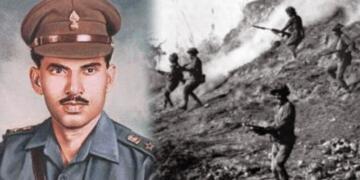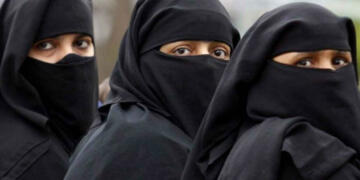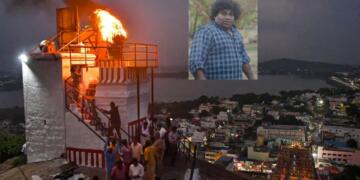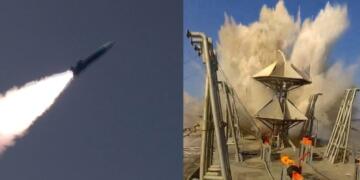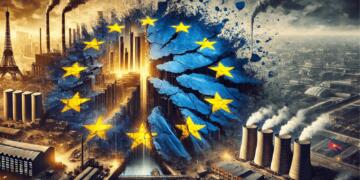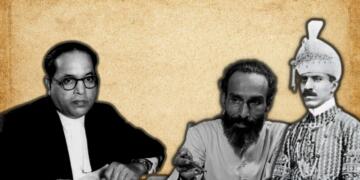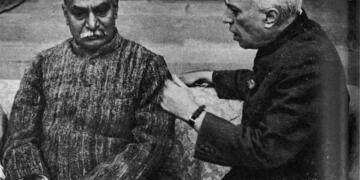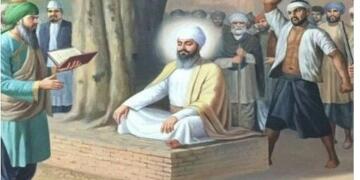Whether it is getting up for the office, schools, or these days catching the India-Australia series (which just ended 3-1, with India losing by the way), the Famous Delhi Fog is something we’ve all experienced, often with a grumpy face.
But, have you ever wondered why this phenomenon occurs? What is the science behind it? If no, read along, and you’ll have something to brag about to your friends. If yes, then revisit it for a fresh perspective.
On January 4th, Delhi recorded one of its longest spells of dense fog, with zero visibility lasting for 9 hours. The result? Over 80 trains and nearly 200 flights were delayed.

Now, let’s dive into the explanation and walk through the Science of Fog:
How Does Fog Form?
Fog is essentially a cloud that hugs the ground. To understand how fog forms, imagine this:
- Think of water vapour as invisible moisture floating in the air.
- This vapour behaves like a crowd of people at a party. When the party room (air) gets too cold, people (water vapor) huddle together for warmth. This “huddling together” is condensation, and it’s how fog forms!
Here’s the step-by-step process:
- The Air Gets Saturated:
The air can hold only so much moisture before it becomes saturated. This limit depends on the temperature. Warmer air can hold more water vapour, while cooler air holds less. - Condensation Begins:
When the temperature drops—say during a chilly Delhi winter night—the water vapour in the air starts condensing into tiny droplets. These droplets float around, forming the fog we see.- Picture a cold drink on a hot day. Water droplets form on the outside of the glass because the air near the surface cools down and condenses. Fog forms the same way, except it happens in the air.
3. Tiny Droplets Hang in the Air:
Once the water vapour condenses, the droplets don’t immediately fall like rain. Instead, they stay suspended because they are extremely light. This creates the hazy, misty effect we call fog.

Examples and Analogies
- Breath on a Cold Morning:
Ever noticed how your breath becomes visible on a chilly day? That’s because the warm moisture in your breath cools rapidly in the cold air, condensing into tiny droplets—just like fog! - Steam from a Hot Cup of Tea:
When you make tea, the steam rising from the cup looks a lot like fog. If you leave the tea in a cool room, the steam can condense into tiny droplets near the surface, much like the fog that forms on a cold morning.
3. Low Clouds: Fog and clouds are essentially the same in composition, but they differ in where they form
- Clouds: Form high up in the atmosphere and are carried over large areas by wind.
- Fog: Forms close to the ground and often stays in one place due to calm conditions.
- However, unlike clouds, fog doesn’t grow tall enough or become dense enough to produce rain. While clouds have vertical growth that allows water droplets to merge into raindrops, fog remains shallow and dispersed.
- If you’ve driven through a hill station where clouds envelop the roads, you’ve experienced something close to dense fog.

Can Fog Bring Rain?
Fog can not bring rain because its water droplets are too small and dispersed. For precipitation to occur, droplets need to collide and combine, becoming heavy enough to fall to the ground. This process doesn’t happen in fog due to its shallow nature and lack of vertical movement.
The Right Recipe for Fog Formation
For fog to form, you need the following:
- High Humidity: Without enough moisture in the air, condensation cannot happen. Delhi gets its moisture from rivers, nearby agriculture, and urban activities.
- Cold Temperatures: A sharp drop in temperature cools the air to its dew point, triggering condensation. During winter nights, Delhi’s temperature often dips below the dew point.
- Still Air: Calm winds ensure that the fog stays in place, rather than dispersing quickly.
- Particles for Condensation: Tiny dust or pollution particles in the air provide surfaces for water droplets to form. Unfortunately, Delhi’s air pollution levels make this process more efficient, leading to denser fog.
How Dense Fog Impacts Delhi
Delhi’s dense fog isn’t just a spectacle; it has real consequences:
- Transportation Delays : Reduced visibility affects road, rail, and air travel.
- Health Concerns : The combination of fog and pollution worsens respiratory problems.
- Economic Impacts : Delays and disruptions affect daily productivity and costs.

So, the next time you find yourself staring into the dense fog while waiting for your delayed train or flight, you’ll at least know the fascinating science behind it! And maybe, just maybe, you’ll appreciate it a little more.
Thankyou for your time, it would mean a lot if you could find yourself sharing this with your fellow friends and family.
Until, next time!!!



